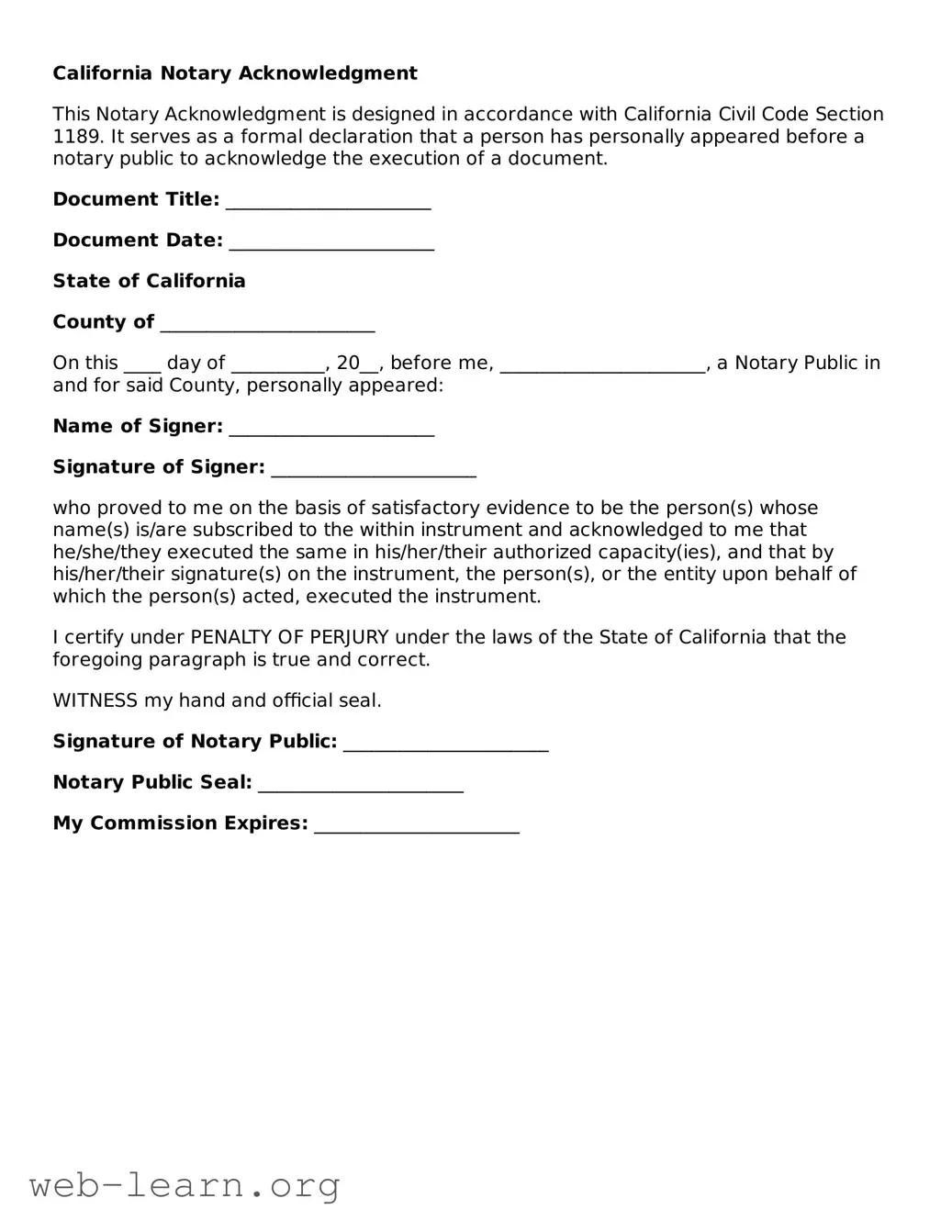California Notary Acknowledgment
This Notary Acknowledgment is designed in accordance with California Civil Code Section 1189. It serves as a formal declaration that a person has personally appeared before a notary public to acknowledge the execution of a document.
Document Title: ______________________
Document Date: ______________________
State of California
County of _______________________
On this ____ day of __________, 20__, before me, ______________________, a Notary Public in and for said County, personally appeared:
Name of Signer: ______________________
Signature of Signer: ______________________
who proved to me on the basis of satisfactory evidence to be the person(s) whose name(s) is/are subscribed to the within instrument and acknowledged to me that he/she/they executed the same in his/her/their authorized capacity(ies), and that by his/her/their signature(s) on the instrument, the person(s), or the entity upon behalf of which the person(s) acted, executed the instrument.
I certify under PENALTY OF PERJURY under the laws of the State of California that the foregoing paragraph is true and correct.
WITNESS my hand and official seal.
Signature of Notary Public: ______________________
Notary Public Seal: ______________________
My Commission Expires: ______________________
